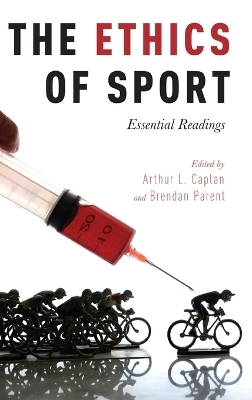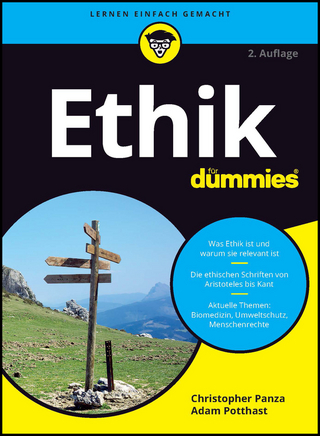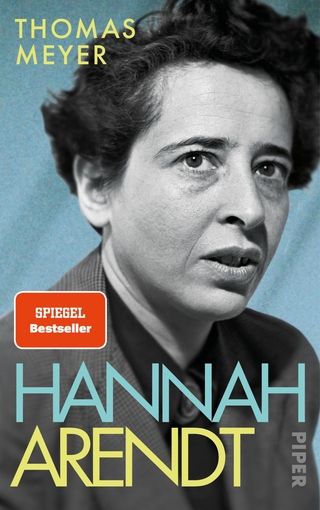
The Ethics of Sport
Oxford University Press Inc (Verlag)
978-0-19-021098-4 (ISBN)
Sport is often thought of as simply "games," but it can in fact be much more. Sport can be responsible for guiding social justice movements, igniting city-wide riots, uniting countries, permanently injuring youth, revolutionizing views about race, gender and class, and producing several of the most successful global industries. Reports of ethical crises in athletics are constant fodder for popular attention, whether performance enhancing drugs in baseball, corruption in college athletics, the epidemic of brain damage among NFL players, and others too numerous to mention. As a proxy for social concerns, we naturally think of sport in inherently moral terms. Yet we can hardly define the term "sport," or agree on acceptable levels of sporting risk, or determine clear roles and responsibilities for fans, players, coaches, owners, media and health care personnel. Bringing together 27 of the most essential recent articles from philosophy, history, sociology, medicine, and law, this collection explores intersections of sports and ethics and brings attention to the immense role of sports in shaping and reflecting social values.
Arthur L. Caplan is the Drs. William F. and Virginia Connolly Mitty Professor of Bioethics and Director of the Division of Medical Ethics at NYU Langone Medical Center. He is the co-founder of the NYU Sports and Society Program. He has served on the special advisory committee to the International Olympic Committee on genetics and gene therapy, and the FIFA special advisory committee on the use of technology in allowing athletes to adapt to altitude and other environmental challenges. He has written extensively on topics in the area of sports, medicine, and ethics. Brendan Parent is Director of Applied Bioethics at the NYU School of Professional Studies, a faculty affiliate of the division of Medical Ethics at NYU Langone Medical Center, and co-director of NYU Sports and Society. His current work focuses on social responsibility in sports, ethical issues in innovative transplants, and ethical issues in genetic technologies. Previously, he was special legal advisor to the New York Task Force on Life and the Law. He received his JD from Georgetown University Law Center, where he was given the ABA award for excellence in Health Law.
Part I. What is Sport?
1. What is sport?
Barthes, Roland, First Chapter of What is Sport?, 2007
2. Normative Theories of Sport: A Critical Review
Sigmund Loland, Journal of the Philosophy of Sport, 2004
Part II. Categories and Discrimination
A. Professional vs. Amateur
3. Uneven bars: Age rules, antitrust, and amateurism in women's gymnastics
Ryan M. Rodenberg and Andrea N. Eagleman, University of Baltimore Law Review, 2011
4. Going pro in sports: Providing guidance to student-athletes in a complicated legal and regulatory environment
Glenn M. Wong, Warren Zola, and Chris Deubert, Cardozo Arts and Entertainment Law Journal, 2011
B. Gender
5. Women in Sport - Gender Relations and Future Perspectives
Gerturd Pfister, Sport in Society, 2010
6. Out of bounds? A critique of the new policies on hyperandrogenism in elite female athletes.
Karkazis, Katrina, et al. The American Journal of Bioethics, 2012
C. Race
7. Race relations theories: Implications for sport management
Smith, E., Hattery, A., Journal of Sport Management, 2011
8. Black Athletes in White Men's Games': Race, Sport and American National Pastimes
David K. Wiggins, The International Journal of the History of Sport, 2014
D. Disability
9. The "Second Place" Problem: Assistive Technology in Sports and (Re) Constructing Normal
D.A. Baker, Science and engineering ethics, 2015
10. More Similar Than Different: The Psychological Environment of Paralympic Sport
Kristin D. Dieffenbach, and Traci A. Statler, Journal of Sport Psychology in Action, 2012
Part III. Athletes as Role Models
11. Professional Athletes and their Duty to be Role Models
Sandra Lynch, Daryl Adair, and Paul Jonson. Achieving Ethical Excellence (Research in Ethical Issues in Organizations, Volume 12) Emerald Group Publishing Limited, 2014
12. An Exploratory Study of Professional Black Male Athletes' Individual Social Responsibility (ISR).
Kwame Agyemang and John N. Singer. Spectrum: A Journal on Black Men 2013
Part IV. Power and Corruption
13. Universities Gone Wild: Big Money, Big Sports, and Scandalous Abuse at Penn State
Giroux HA, Giroux SS, Critical Methodologies, 2012
14. Investigating corruption in corporate sport: The IOC and FIFA
A. Jennings, International Review for the Sociology of Sport, 2011
15. Plata o plomo? Why do Footballers Fix Matches?
D. Hill, Original Publication, 2015
Part V. Risk: Choice and Coercion
A. Dangerous Sports
16. The Organization and Regulation of Full Contact Martial Arts: A Case Study of Flanders
Jikkemien Vertonghen et al. Societies, 2014
B. Football and Concussions
17. Concussion and football: Failures to respond by the NFL and the Medical Profession
David Orentlicher and William David, FIU Law Review, 2013
C. Managing Risk
18. Player safety in youth sports: Sportsmanship and respect as an injury-prevention strategy
Douglas E. Abrams, Seton Hall Journal of Sports & Entertainment Law, 2012
19. Health and Sports Law collide: do professional athletes have an unfettered choice to accept risk of harm?
K Berger, Med Law, 2011
Part VI. Medicine and Sports
20. Ethical Issues in Sports Medicine: A Review and Justification for Ethical Decision Making and Reasoning
BH Greenfield and CR West, Sports Health: A Multidisciplinary Approach, 2012
Part VII. What about Animals?
21. Humans, Horses, and Hybrids: On Rights, Welfare, and Masculinity in Equestrian Sports
Kutte Jonson, Scandinavian Sports Studies Forum, 2012
22. Is Hunting a Sport?
John Alan Cohan, International Journal of Applied Philosophy, 2003
Part VIII. Enhancement and Improvement
23. Sports Enhancement
Thomas H. Murray, Chapter From Birth to Death and Bench to Clinic: The Hastings Center Bioethics Briefing Book for Journalists, Policymakers, and Campaigns, 2008
24. Performance-Enhancing Substances in Sports: A Review of the Literature.
Momaya, Amit, Marc Fawal, and Reed Estes. Sports Medicine, 2015
25. Science at the Olympics
(Ice Vests, New Materials, Does Doping Work, and Neuroscience) SCIENCE 2008
26. Ethics of technologically constructed hypoxic environments in sport
S. Loland and A. Caplan, Scandinavian Journal of Medicine & Science in Sports, 2008
27. Gene Transfer for Pain: A tool to cope with the intractable, or an unethical endurance enhancing technology?.
Silvia Camporesi and Michael J. McNamee. Life Sciences Society and Policy, 2012
Publication Acknowledgments
| Erscheinungsdatum | 23.11.2016 |
|---|---|
| Zusatzinfo | 9 |
| Verlagsort | New York |
| Sprache | englisch |
| Maße | 239 x 165 mm |
| Gewicht | 1021 g |
| Themenwelt | Sachbuch/Ratgeber ► Sport |
| Geisteswissenschaften ► Philosophie ► Ethik | |
| Medizin / Pharmazie ► Medizinische Fachgebiete ► Sportmedizin | |
| Naturwissenschaften ► Biologie | |
| Sozialwissenschaften ► Soziologie ► Mikrosoziologie | |
| ISBN-10 | 0-19-021098-2 / 0190210982 |
| ISBN-13 | 978-0-19-021098-4 / 9780190210984 |
| Zustand | Neuware |
| Haben Sie eine Frage zum Produkt? |
aus dem Bereich


